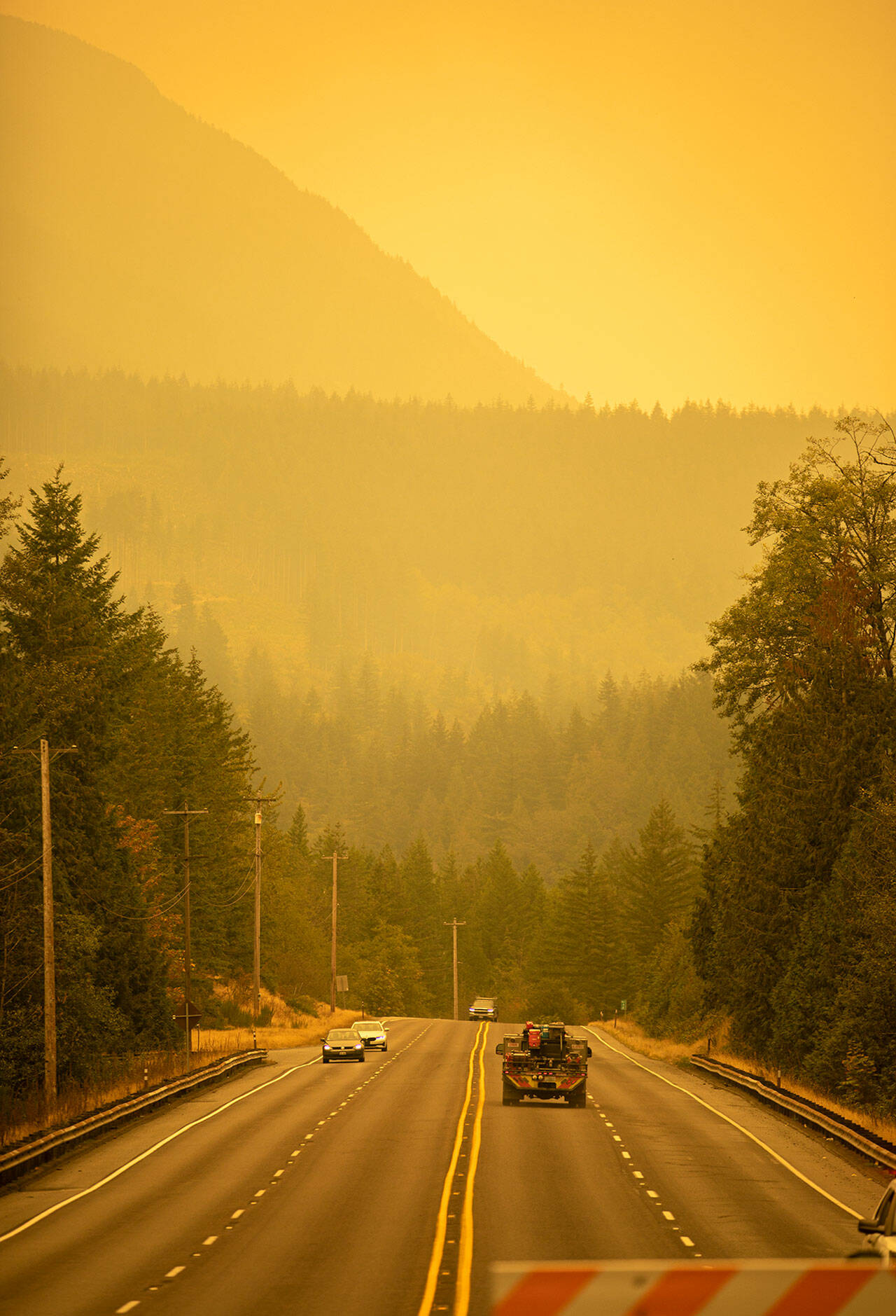As smoke smothered the East Coast this week, a dry May increased the potential for more serious fires later this summer in Western Washington — with a new forecast showing the region has one of the worst outlooks in the nation.
The National Interagency Fire Center released its updated fire report on June 1 and it noted all but the southeastern tip of Washington were at “above normal” fire potential for July to September. According to the fire center, this means “a greater than usual likelihood that significant wildfires will occur.”
On June 6, the National Weather Service issued its first red flag warning for west of the Cascades this year, another sign fire season is here.
Reid Wolcott, a meteorologist with the National Weather Service, said it was the earliest red flag warning issued for the region since at least 2006 — and perhaps ever. Warm temperatures, wind speeds and dry forests can result in a red flag warning.
“We’re kind of getting into unique territory as far as how dry the spring and now early summer are looking,” Wolcott said. “And there’s really no significant chance of widespread precipitation at all on the horizon.”
There were 19 red flag events in Western Washington last year, according to the National Weather Service.
An otherwise wet spring has resulted in new underbrush. The problem is all that brush begins to dry out due to warmer temperatures in the summer and fall. It becomes fuel.
There also have not been a lot of big fires in Western Washington over the last several hundred years. Some time around the year 1700, there was a massive fire that burned millions of acres, but since then there have been few catastrophic fires west of the Cascades.
Fuel loads of up to 300 tons per acre were reported at the Bolt Creek fire last year, according to fire officials. Without consistent prescribed burns or other means to control forest density, the risk of destructive wildfires increases.
“There is a lot of fuel to burn once it becomes dry,” Wolcott said. “That’s one of the big concerns here in the Pacific Northwest. We haven’t had a long history, at least in the last century, of large wildland fires because we’re typically pretty wet. As we get drier and we have warmer and drier summers, that’s concerning.”
The Pacific Northwest is now in El Niño cycle, with the Climate Prediction Center announcing the climate pattern was officially here on June 8. El Niño years bring above normal temperatures, but do not have a strong correlation with precipitation, Wolcott said.
According to the state’s Department of Natural Resources, fuels dryness is already at normal August levels.
“We’re a couple months ahead of schedule,” said Kevin Killian, district manager with the Department of Natural Resources.
While the fire season has been off to a slow start in the lower 48, firefighters at the DNR use the time to train. Firefighters go through seasonal class trainings and then a physical fitness test where they hike 3 miles with a 45-pound pack.
The agency operates eight helicopters and eight small single-engine tankers. Several larger helicopters and scooper planes are also contracted by the department.
“This month, all that air force is coming on board,” Killian said. “… That’s our preparation.”
At the national level, the U.S. Forest Service Deputy Chief Jaelith Hall-Rivera reported during a U.S. Senate budget hearing June 8 that 10,068 wildland firefighters have been hired as of May 30. That is 89% of their goal. The Forest Service is requesting funding for another 970 firefighters for fiscal year 2024.
U.S. Sen. Maria Cantwell, of Washington, is on the committee and spoke about the fire danger approaching for her home state. The hearing came as the East Coast was blanketed by Canadian wildfire smoke, an event that has become commonplace each year in the West.
“My whole state is in the forecast for this summer being the epicenter of this,” Cantwell said.



